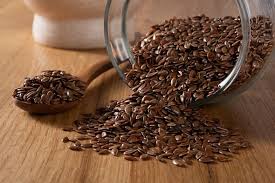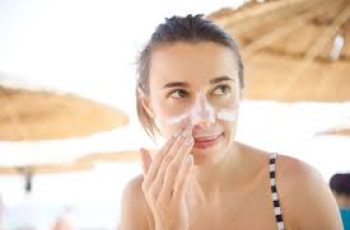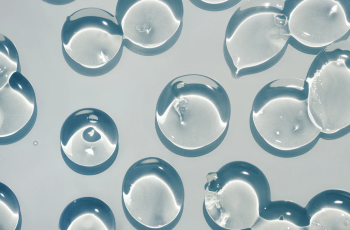
Skincare Myth Debunked: Is Flaxseed Really a Natural Botox?
In the world of skincare, it seems like every week a new “miracle” ingredient goes viral—promising glowing skin, wrinkle-free features, and the fountain of youth in a bottle. One of the most recent trends gaining momentum across social media platforms like TikTok, Instagram, and YouTube is the idea that flaxseed, when used as a face mask or in oil form, acts as a natural version of Botox. Dubbed by influencers as “nature’s Botox,” this claim has been catching the attention of beauty enthusiasts everywhere. But is there any scientific truth behind the claim? Can flaxseed really mimic the effects of Botox?
As someone who prefers evidence-based skincare and is cautious about viral trends, I decided to take a deep dive into the science behind Botox and flaxseed to see if there is any real merit to this comparison. Spoiler alert: while flaxseed can offer several beneficial properties for your skin, calling it a natural alternative to Botox is misleading at best.
Understanding Botox: What It Is and How It Works
To understand why flaxseed doesn’t measure up to Botox, we first need to understand what Botox actually is and how it works. Botox is the trade name for a purified form of botulinum toxin type A, a neurotoxin produced by the bacterium Clostridium botulinum. While the word “toxin” might sound alarming, Botox is used in extremely small, controlled doses for both cosmetic and medical purposes.
In aesthetic medicine, Botox is primarily used to treat what are known as dynamic wrinkles—the lines that form due to repetitive facial muscle movements like frowning, squinting, or raising the eyebrows. Common areas treated with Botox include the forehead, crow’s feet (around the eyes), and glabellar lines (between the eyebrows).
Here’s a simplified explanation of how Botox works:
Botox targets a protein in nerve endings called SNAP-25.
SNAP-25 is involved in the release of acetylcholine, a neurotransmitter responsible for muscle contractions.
When Botox is injected into a specific muscle, it blocks the release of acetylcholine by interfering with SNAP-25.
As a result, the muscle becomes temporarily paralyzed or relaxed.
This leads to smoother skin above the muscle, as it can no longer contract and form wrinkles.
The effects of Botox are not permanent; they typically last between 3 to 6 months, depending on the individual, the area treated, and the dosage used. After that time, the muscle regains function, and repeat injections are necessary to maintain the wrinkle-reducing effects.
Though generally considered safe when administered by licensed professionals, Botox does carry some potential side effects, including:
Temporary bruising or swelling at the injection site
Mild headache
Drooping eyelids (rare and usually temporary)
Muscle weakness in nearby areas
Despite these risks, millions of people worldwide opt for Botox because of its predictable, targeted, and fast-acting results.
What Is Flaxseed and How Is It Used in Skincare?
Now let’s turn our attention to flaxseed. Flaxseed, also known as linseed, comes from the flax plant (Linum usitatissimum). It’s a nutritional powerhouse and has long been consumed for its health benefits, particularly for heart health and digestive regularity. In recent years, flaxseed has found its way into the skincare world as both a dietary supplement and a topical treatment.
There are several forms of flaxseed used in skincare:
Flaxseed Oil – Cold-pressed from the seeds, this oil is rich in essential fatty acids and antioxidants.
Ground Flaxseed Paste – Often used in homemade masks for its thick, gelatinous texture.
Flaxseed Gel – Created by boiling flaxseeds in water until a gel-like substance forms, used similarly to aloe vera gel.
Skin Benefits of Flaxseed
Flaxseed contains several bioactive compounds that make it appealing in skincare:
Omega-3 Fatty Acids: Primarily alpha-linolenic acid (ALA), which helps reduce inflammation and supports skin barrier function.
Lignans: Powerful antioxidants that help neutralize free radicals and may offer anti-aging benefits.
Vitamin E: An antioxidant known for its ability to protect the skin from oxidative stress and environmental damage.
Mucilage (a gel-like substance): Acts as a natural moisturizer and may improve skin texture temporarily.
When applied topically, flaxseed-based products can provide several benefits, including:
Hydration and moisture retention
Improved skin elasticity over time
Anti-inflammatory effects that may soothe irritation or redness
Antioxidant protection against environmental aggressors like UV rays and pollution
These are all excellent qualities in a skincare ingredient, and flaxseed can certainly be a helpful addition to your routine. However, none of these benefits equate to the muscle-paralyzing effects that Botox achieves.
The Science: Why Flaxseed Is Not a Substitute for Botox
At the root of this myth is the misconception that similar outcomes imply similar mechanisms. While flaxseed can give the appearance of smoother or plumper skin through hydration and improved skin tone, it doesn’t affect the underlying facial muscles at all. Botox, on the other hand, works by targeting the nervous system’s communication with facial muscles. It blocks specific neurotransmitters, thereby stopping muscle movement.
Flaxseed does not contain any compounds capable of crossing the skin barrier and interfering with neurotransmitter release. Even if it did, applying a gel or oil topically wouldn’t reach the neuromuscular junctions deep within facial tissues where Botox exerts its effect.
In short:
Botox = acts on nerves and muscles
Flaxseed = acts on the outer skin layers (epidermis and possibly dermis)
A Temporary “Tightening” Illusion?
Some users report that flaxseed masks give their skin a temporarily lifted or firmed appearance. This may be true due to the natural film-forming properties of flax mucilage, which tightens slightly as it dries—similar to what happens with egg white masks or certain clay masks. However, this effect is purely surface-level and temporary. Once you rinse the mask off, your skin returns to its original state.
Comparing Botox and Flaxseed: A Closer Look
Let’s break it down further by comparing the two side-by-side:
Feature Botox Flaxseed
Method of Application Injection Topical (oil, gel, or mask)
Acts On Facial muscles and nervous system Outer skin layers
Mechanism of Action Blocks acetylcholine to paralyze muscles Provides hydration, antioxidants, anti-inflammation
Targeted Wrinkle Reduction Yes, especially dynamic wrinkles No direct wrinkle reduction
Duration of Results 3–6 months Temporary surface improvement
Onset of Effects 3–7 days after injection Immediate (hydration/tightening) but short-lived
Risks Mild bruising, headache, rare drooping Generally low; possible irritation
FDA Approved Yes, for cosmetic and medical use No official claims as wrinkle treatment
Cost Moderate to High Low
Why This Myth Persists on Social Media
Social media can be a powerful platform for spreading beauty tips, but it’s also rife with misinformation. Short-form videos can be misleading, often focusing on visual results without explaining the science behind them. When someone claims “this flaxseed mask erased my wrinkles,” they may be experiencing a temporary plumping or tightening effect—not actual wrinkle removal.
Additionally, many users are drawn to the idea of “natural” remedies, believing they are safer, healthier, and just as effective as medical treatments. While there is nothing wrong with preferring natural skincare, it’s important to manage expectations and understand what a product can and cannot do.
Should You Use Flaxseed in Your Skincare Routine?
Absolutely—if it’s compatible with your skin type. Flaxseed can be a nourishing, hydrating ingredient for many people and may support overall skin health. Here are some ideas for incorporating flaxseed into your routine:
DIY Flaxseed Gel: Use as a lightweight moisturizer or hydrating base under heavier creams.
Face Mask: Combine flaxseed with ingredients like honey or yogurt for a soothing, antioxidant-rich mask.
Flaxseed Oil: Apply a few drops after serum to lock in moisture, especially at night.
However, if you’re looking for something to reduce dynamic wrinkles or prevent them from forming, flaxseed won’t deliver those results.
Final Thoughts: Flaxseed Is Not Natural Botox
In conclusion, while flaxseed offers numerous skincare benefits thanks to its high content of omega-3s, antioxidants, and soothing properties, it does not replicate the effects of Botox. The two treatments work via entirely different mechanisms, target different layers of the skin, and offer different types of results.
Calling flaxseed a “natural Botox” may sound catchy, but it’s a gross oversimplification that risks misleading consumers. That doesn’t mean flaxseed isn’t valuable in skincare—it just means we shouldn’t confuse supportive skin nutrition with neuromodulation.
As always, make decisions based on reliable science and your individual skin type. And when in doubt, consult with a dermatologist or skincare professional.


